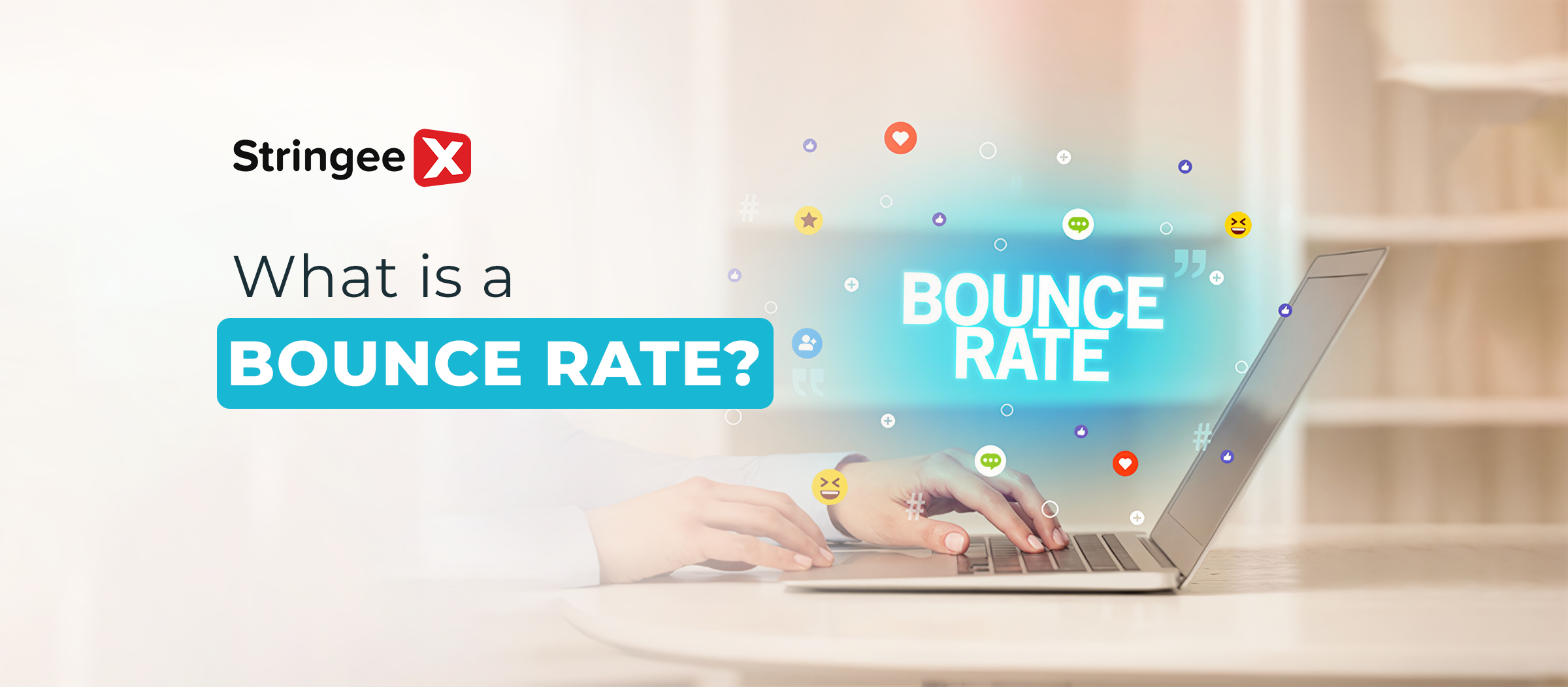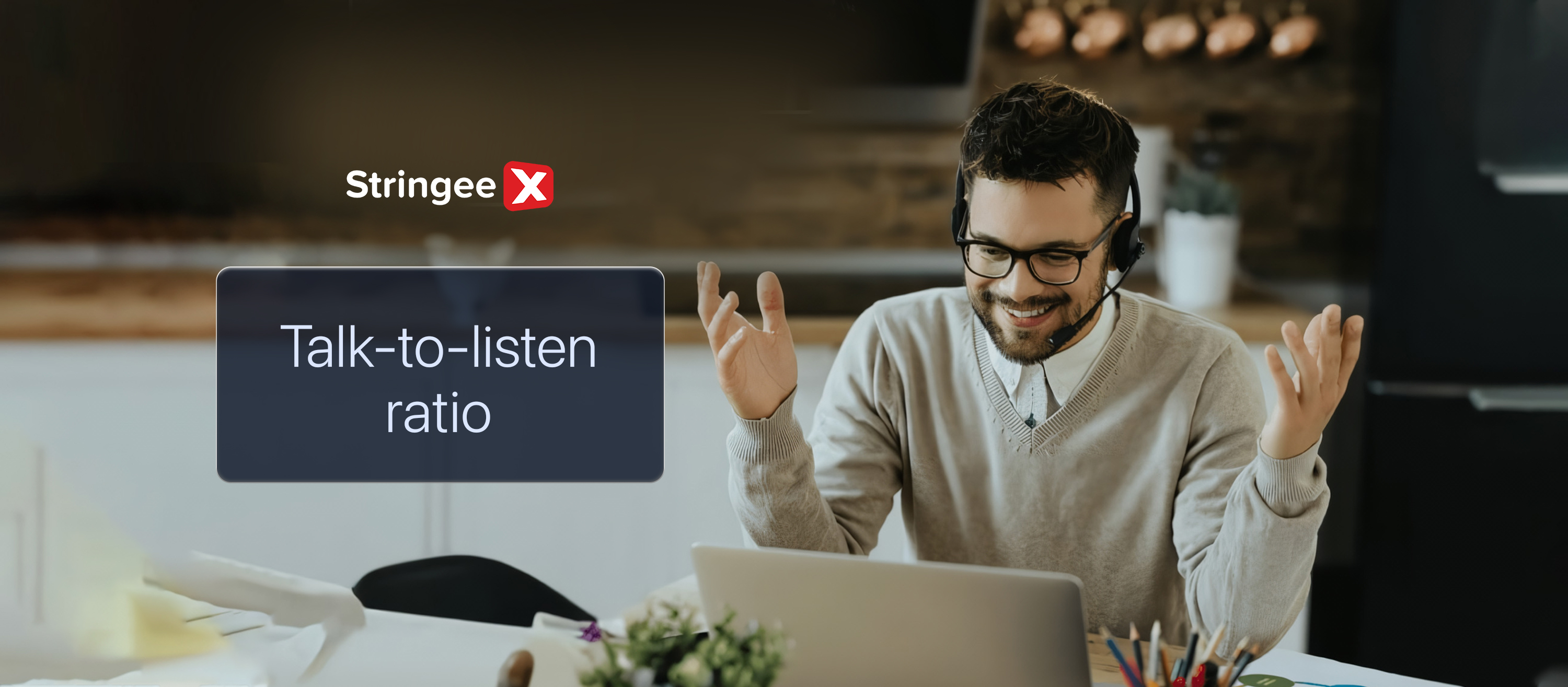Bounce rate is an extremely important indicator in SEO, helping businesses evaluate the quality of their website and whether it is user-friendly or not. In this article, let's find out with StringeeX what the bounce rate is and how to optimize this index at the lowest level!
What is the bounce rate?
Bounce rate is the percentage of website visits in which users view only a single page before leaving without viewing the next page. This is often used as an indicator of the overall engagement level of a website.
For example: Suppose your website's bounce rate is 60%. It means that out of 100 visits, only 40 users continue to view other content, while another 60 leave immediately after visiting.
What is the role of bounce rate?
Bounce rate is a very important indicator in SEO for the following reasons:
- Helps measure customer satisfaction when they visit the website: When the Bounce rate is high, it can indicate that the content on the website does not meet expectations and does not attract users to stay.
- Measuring website quality and SEO quality: A high bounce rate often goes hand in hand with poor website quality. It not only affects the user experience but also reduces the quality of the website from the perspective of search engines like Google, making it difficult to achieve high rankings.
- Evaluate conversion rates: When users leave immediately after visiting, the likelihood of convincing them to convert is reduced. Bounce rate optimization helps improve conversions and retain customers on the website longer.
>>>> Read more: 5 Most Detailed Digital Marketing Plan Templates
What bounce rate is reasonable?
The bounce rate does not have a common standard level. With more than 4 billion pages on the Internet, assessing this metric becomes difficult due to the diversity of website types and industries.
Determining a "good" bounce rate is relatively relative and depends on the type of page and traffic source.
For example, an informational article from the search may have a Bounce rate as high as 80%, but this does not mean that the page is low quality. The user may have already found the information they need and doesn't need to look further. On the contrary, a page with a low bounce rate is not necessarily good, if the user experience is not satisfactory.
Here are some average bounce rates by industry:
- Website content: 40% - 60%
- Lead generation website: 30% - 50%
- Blog posts: 70% - 90%
- Retail/e-commerce websites: 20% - 40%
- Service site: 10% - 30%
- Landing page: 70% - 90%
These numbers are intended as a general guide to evaluate the performance of the respective websites in each industry.
What is the cause of the high bounce rate?
To reduce the Bounce rate and optimize the quality of the website, we need to find out in detail what causes this index to increase.
Here are 6 main reasons why the bounce rate is high:
Page loading speed is slow
Slow page load speeds aren't just a simple matter of a few seconds. Every second of waiting on the website can cause customers to turn around and leave, causing a high Bounce rate.
In addition, page loading speed also affects your search ranking on Google. This makes monitoring and improving page load speed an important factor for optimizing SEO and reducing bounce rates.
The article content is not of good quality
Creating website content must meet the user's search needs. Otherwise, they will leave the site in search of better-quality information. Quality content not only retains users but also stimulates them to explore more.
Poor user experience
Layout, color, imagery, and presentation play a big role in a user's decision to stay or leave. A cluttered website with an unbalanced layout can lead to a high bounce rate.
The content does not match the title
Having an attractive title and description that does not reflect the actual content loses user trust and leads to leaving the page immediately after visiting.
Lack of internal links
Internal linking between articles can help reduce bounce rates, leading readers from one content to another, and providing a more seamless experience.
Sudden increases in bounce rate can be a sign of technical issues such as 404 errors, javascript, or plugin errors. Test and fix errors to ensure the website operates smoothly.
How to effectively reduce bounce rate
Normally, article content on the website will be diverse with two main types:
- Question-answering articles: These articles focus on answering questions that users often search for on Google. They clarify and answer specific issues.
- Articles that explore new issues: These are unique articles that raise new issues, challenging readers with ideas and information they have never thought of or sought before.
Therefore, to reduce the Bounce rate on the website, you can do the following:
Redistribute content orientation
If all the content on the site is new articles, with a unique perspective, it can reduce its ability to attract searchers on Google, because they don't know that information yet.
Therefore, you should spend about 70-80% of your blog content on articles that have good searchability on Google, while keeping 20-30% for new content. After adjusting this content strategy, you will witness growth in website traffic.
Link to other unique articles in the article
Once customers have found the information they need, they will often leave the website. But how to keep them?
An effective way is to engage visitors with unique articles. Place links to these articles in useful content that users may be interested in and search for.
Note: Title your article in an attractive way to attract readers' attention.
Focus on article quality
When customers search on Google and select a result, their experience begins with that article. If the content is unattractive or has interface problems, they may quickly lose trust and leave the site, returning to Google to find other options.
It is important to ensure that the article they have chosen meets their expectations and provides value. The quality of the content being searched for will determine the reader's confidence in reviewing other articles.
Therefore, to reduce the bounce rate, focus on improving the quality of the article, instead of focusing on increasing the number uncontrollably.
Clean layout
Excellent content also requires attention to presentation to create a complete and engaging article. Here are some important presentation rules:
- Illustrations: Articles should include at least 3 illustrations when there are about 1000 words. Images not only make content lively but also increase viewer interaction with the article.
- Optimize images: Image size is important to avoid slow website loading. Keep the size around 500px to 700px and the capacity under 100KB to ensure the best experience for viewers.
- Visual structure: Use formatting and separation for content paragraphs to keep articles easier to read. Avoid writing clumps of text, helping readers follow information easily.
Conclusion
The above article has helped readers clearly understand what Bounce rate is and ways to reduce page bounce rate, thereby optimizing website quality. StringeeX hopes that the information in the article will help your business in building your website.
Besides attracting customers through the website, to optimize business efficiency and increase sales, businesses also need to pay attention to customer service activities.
StringeeX software was born to help businesses optimize customer care activities with a multi-channel, all-in-one system. Communication channels such as Facebook Messenger, Zalo OA, Email, and Hotline are all managed through one channel, helping to save time and make the customer care process more convenient. Therefore, Email Marketing activities will be easier to manage and deploy.
In particular, StringeeX provides open APIs, helping to quickly integrate with other CRM/ERP software such as AMIS CRM, Hubspot, Salesforce, etc. This supports the process of caring for and managing customer data at all stages.










